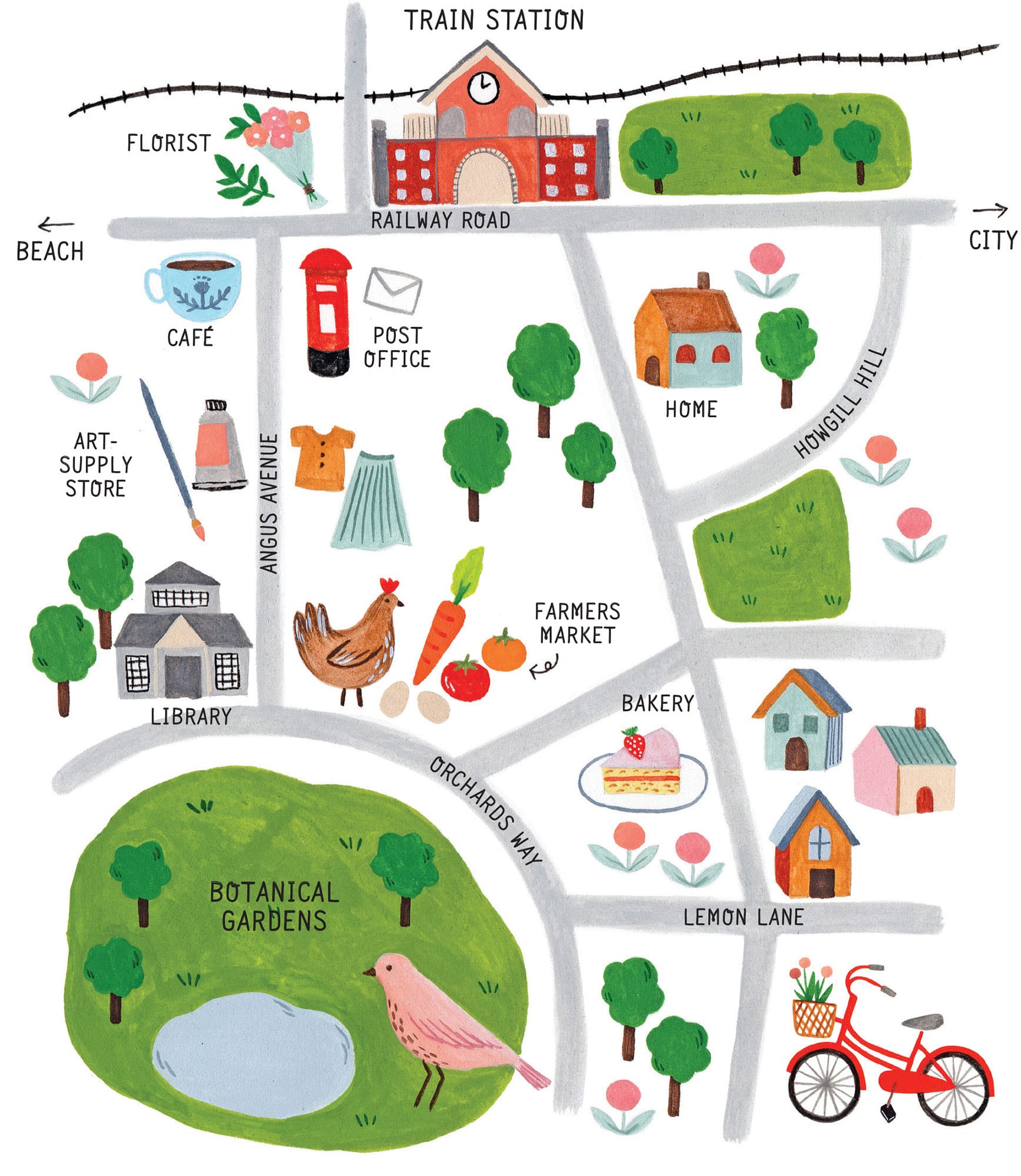AROUND TOWN
This section will inspire you to explore your own local area. Do you have a favorite café? Is there a quirky street filled with colorful houses? Perhaps there’s a special spot where you like to sit and watch the world go by?
Grab your sketchbook, hop on your bike or take a walk, and explore your neighborhood. You’ll be surprised by how much there is to see and draw!

Creative Prompt
BICYCLE
When drawing a bicycle, it can be difficult to get the proportions and alignment right. Here, I’ve included a simple, easy-to-follow tutorial for drawing a bike using my own two-wheeler that I ride around town. Soon you’ll be drawing bicycles with ease!

Use a ruler to lightly draw two horizontal lines a couple inches apart; then draw two circles inside the lines.
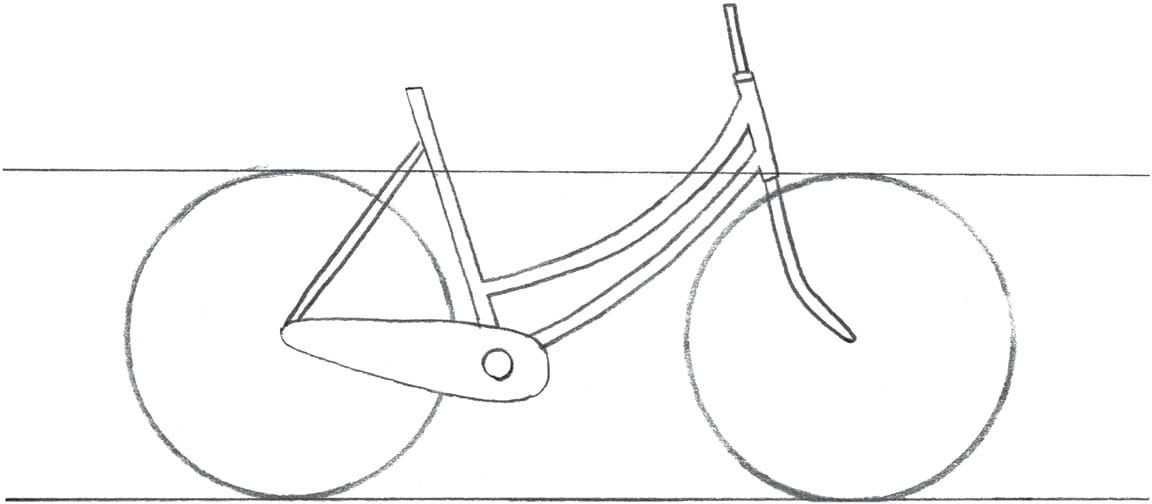
Draw the basic frame of the bicycle, as shown here.
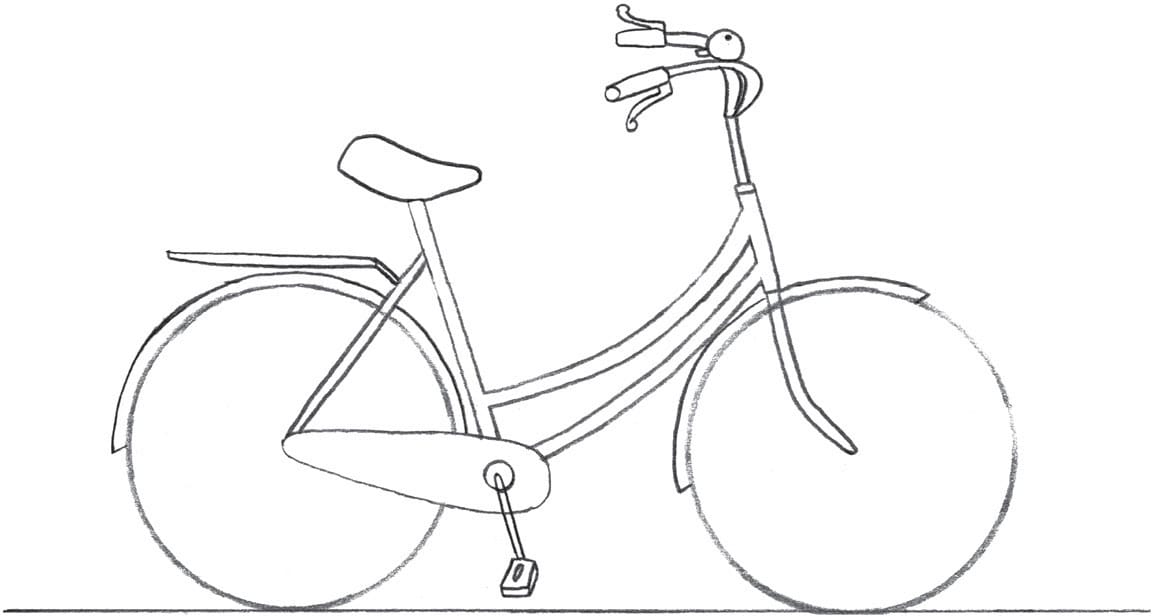
Add handlebars, a seat, a pedal, and other elements to the bike. Once you have the basic shape of the bicycle down, you can add details and erase the upper guideline.
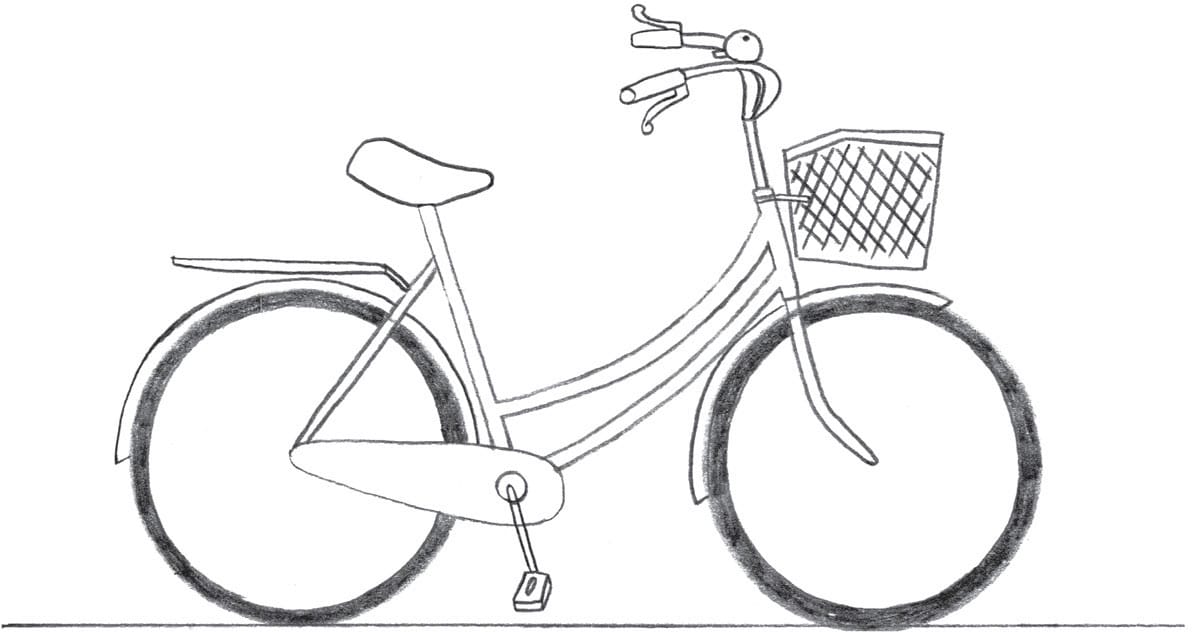
Thicken the tires with shading and add a basket to the front of the bike.
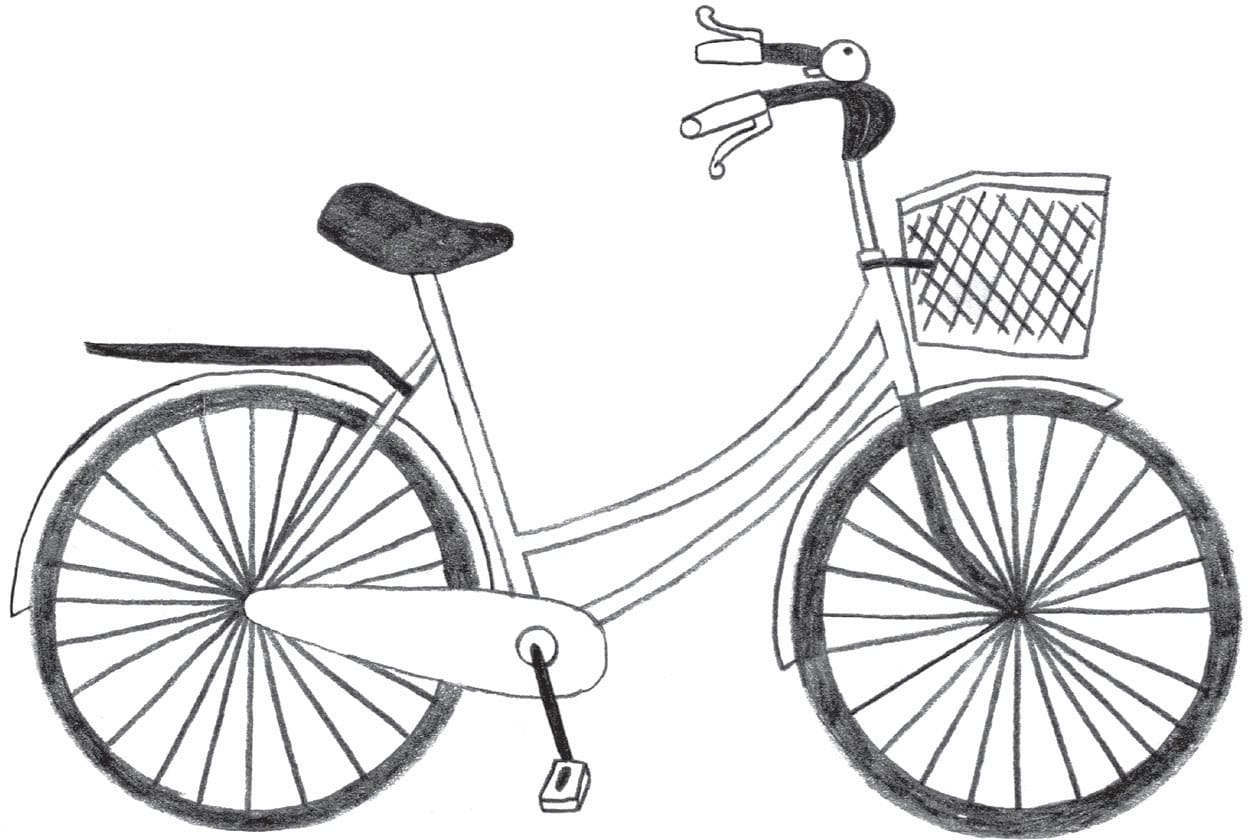
To bring the bike to life, create shading on the bicycle seat and handlebars. Add spokes to the wheels and erase the bottom guideline to finish your drawing.
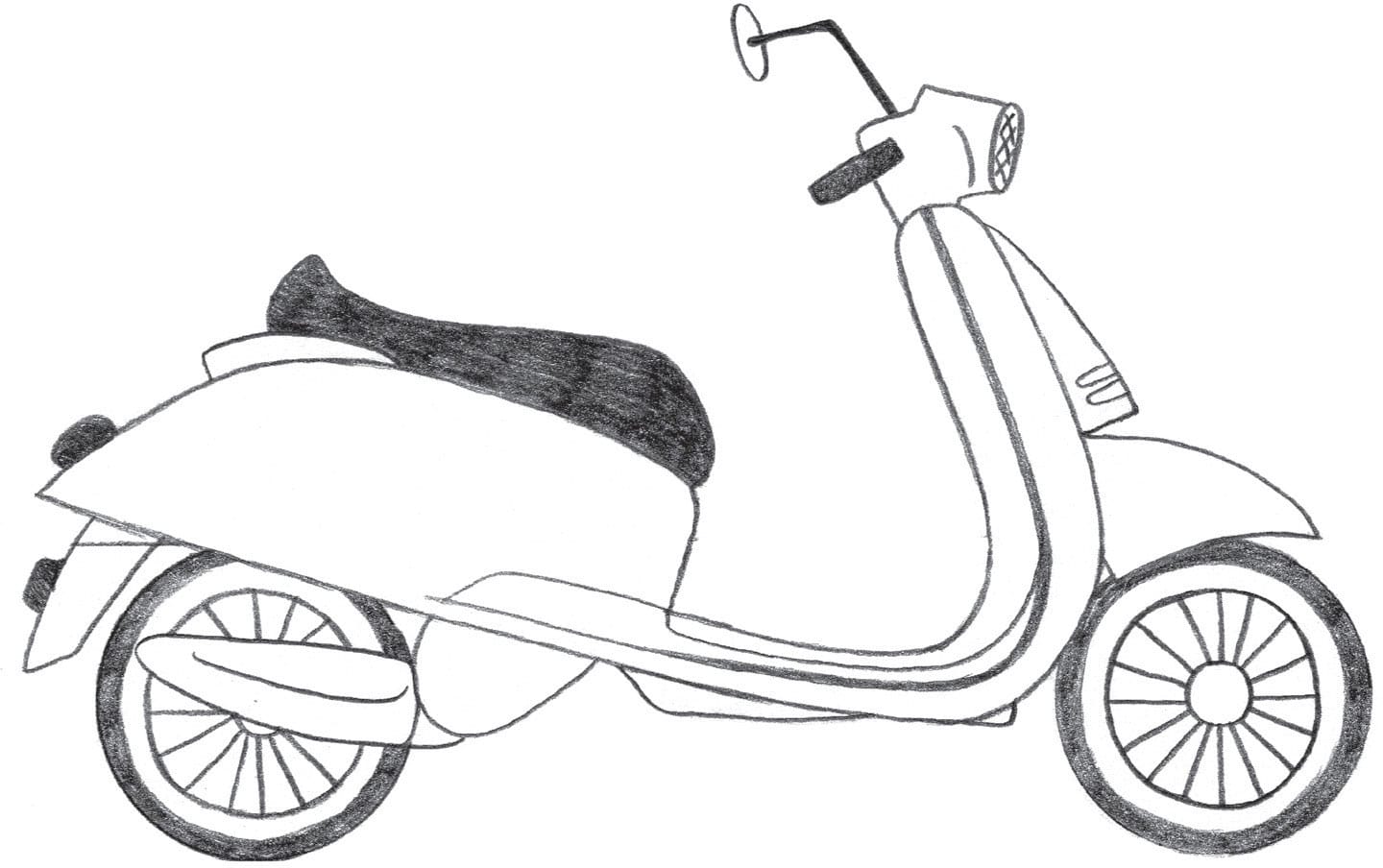
Creative Prompt
MAILBOXES
Have you ever paid attention to the different mailboxes around your neighborhood? Mailboxes tend to be small, which makes them excellent drawing subjects with which to practice, and they can be varied, unique, pretty, and exquisite! Even an ornate mail slot in a door can be eye-catching and charming.
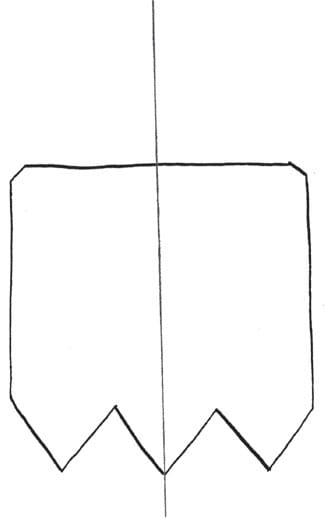
With a ruler and pencil, draw a vertical guideline. Keeping the guideline in the center and using black ink and a nib pen, draw a box with three points at the bottom.
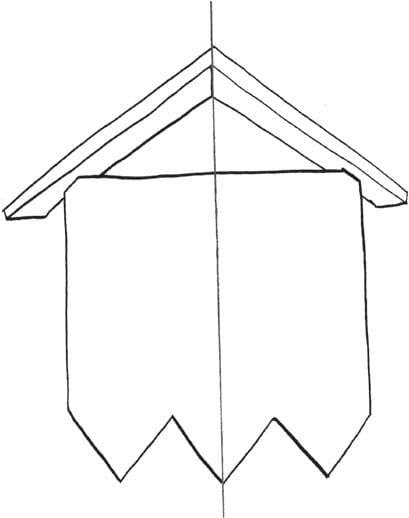
Draw a roof on top using the vertical guideline as its center. Now it’s starting to resemble a little house!
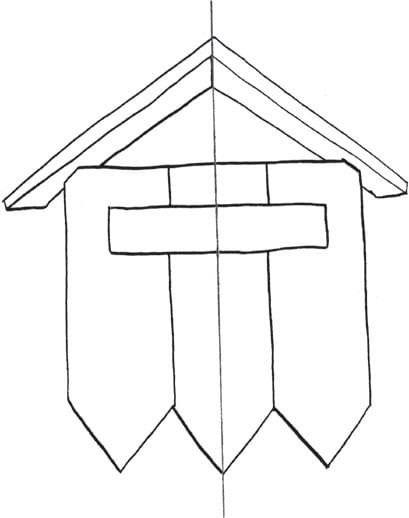
Add a rectangular opening for the mail slot, plus vertical lines inside the box. Erase the guideline.
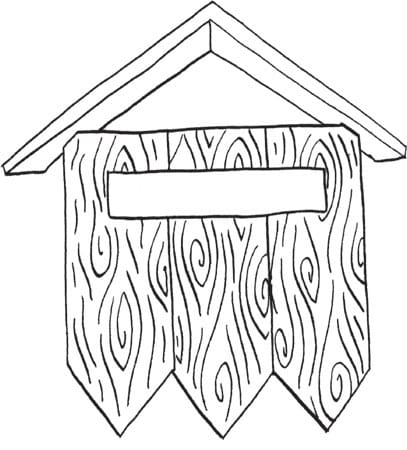
Lastly, add some vertical swirly lines to create a wooden effect, making sure to draw around the mail slot.

To draw a mail slot, start with a rectangle before adding a decorative shape around it. Don’t worry if it’s not perfect—it adds to the charm! Hand letter a word inside the rectangle, such as “letters” or “mail.”

To draw an ornately patterned mailbox, start with a curved arch. This will form the top of the mailbox.
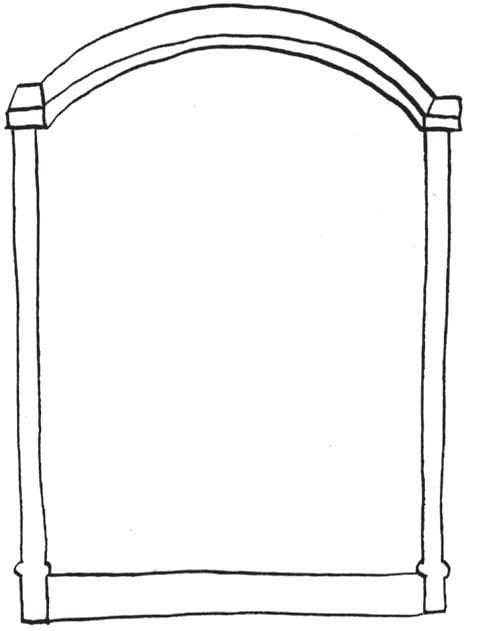
Add a set of vertical lines on each side and horizontal lines at the bottom to create a box.
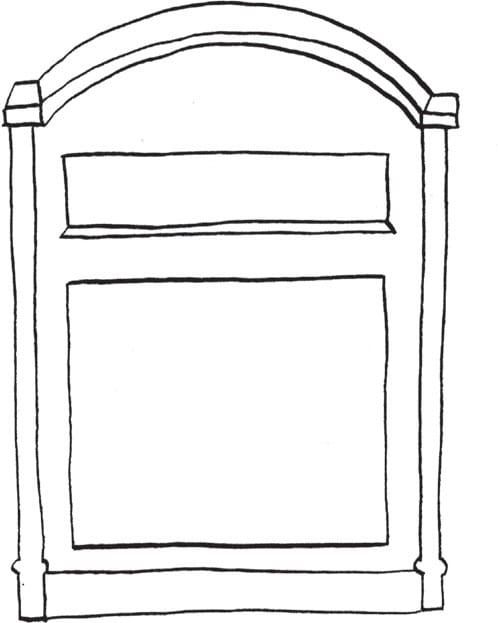
Draw a rectangle with a lip at the bottom; then add a larger box underneath.
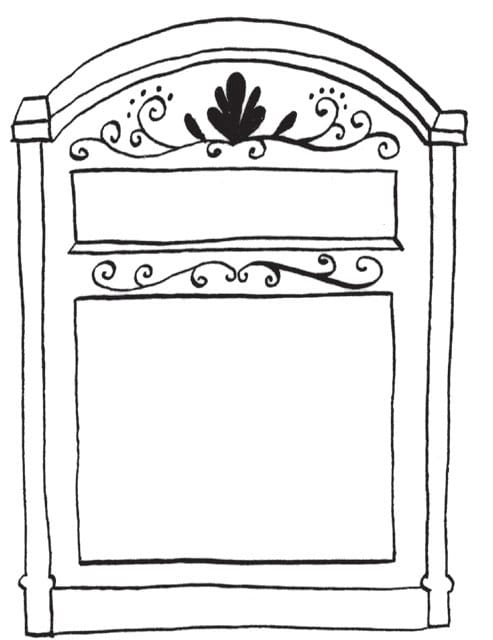
Add ornate details.
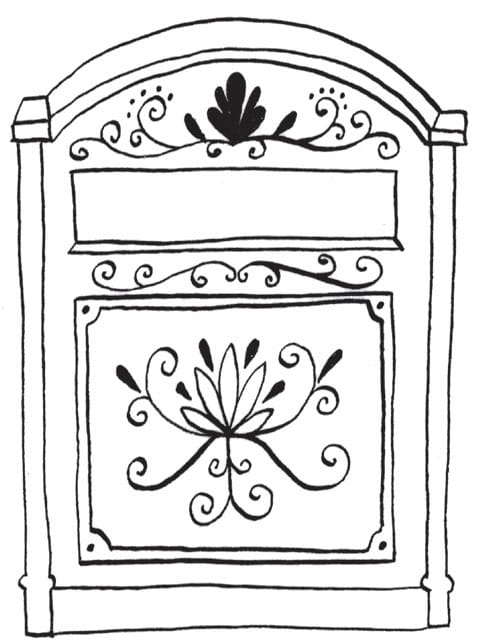
Add a pretty floral motif and smaller frame inside the larger box.
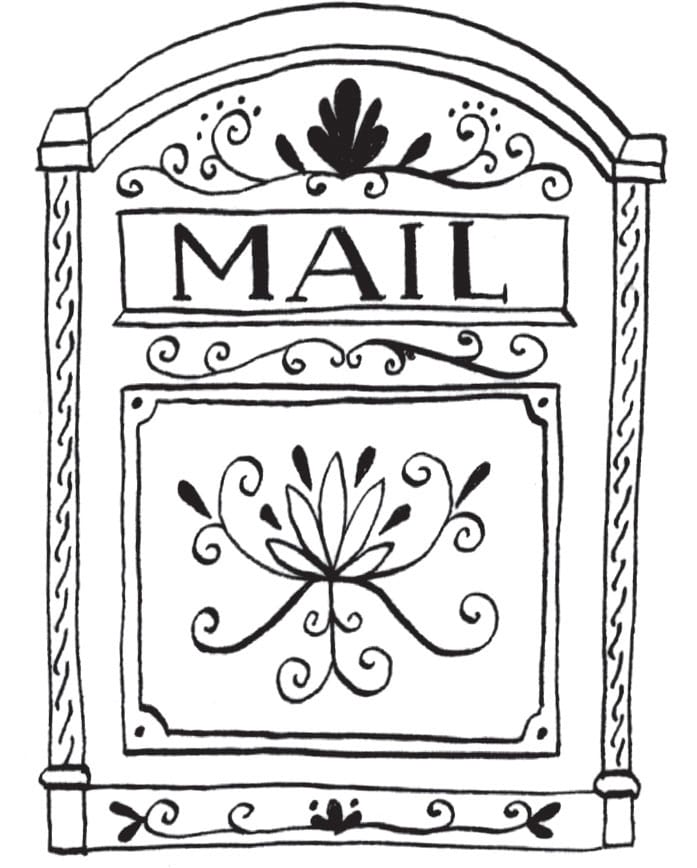
Finally, hand letter the word “MAIL” inside the rectangle and add detail to the columns on each side of the mailbox.
Exercise
HOUSE
Anytime I’m feeling uninspired or like I need to get out of the house, I take a short stroll around my neighborhood. Often, I’ll come across charming houses that make for wonderful subject matter, like this townhouse. When I see something I like, I’ll take a photo and save it to a specific album on my phone for future reference. What do the houses look like in your neighborhood?
1
With a mechanical pencil, create a sketch of a home in your neighborhood, or draw this one. Capture as much detail as you wish. Place the sketch on a light box and secure with masking tape; then place a sheet of watercolor paper on top and secure that with masking tape as well.
In a palette, mix black gouache with a small amount of water. You will want to create a flat, dark line, so the gouache should remain opaque.
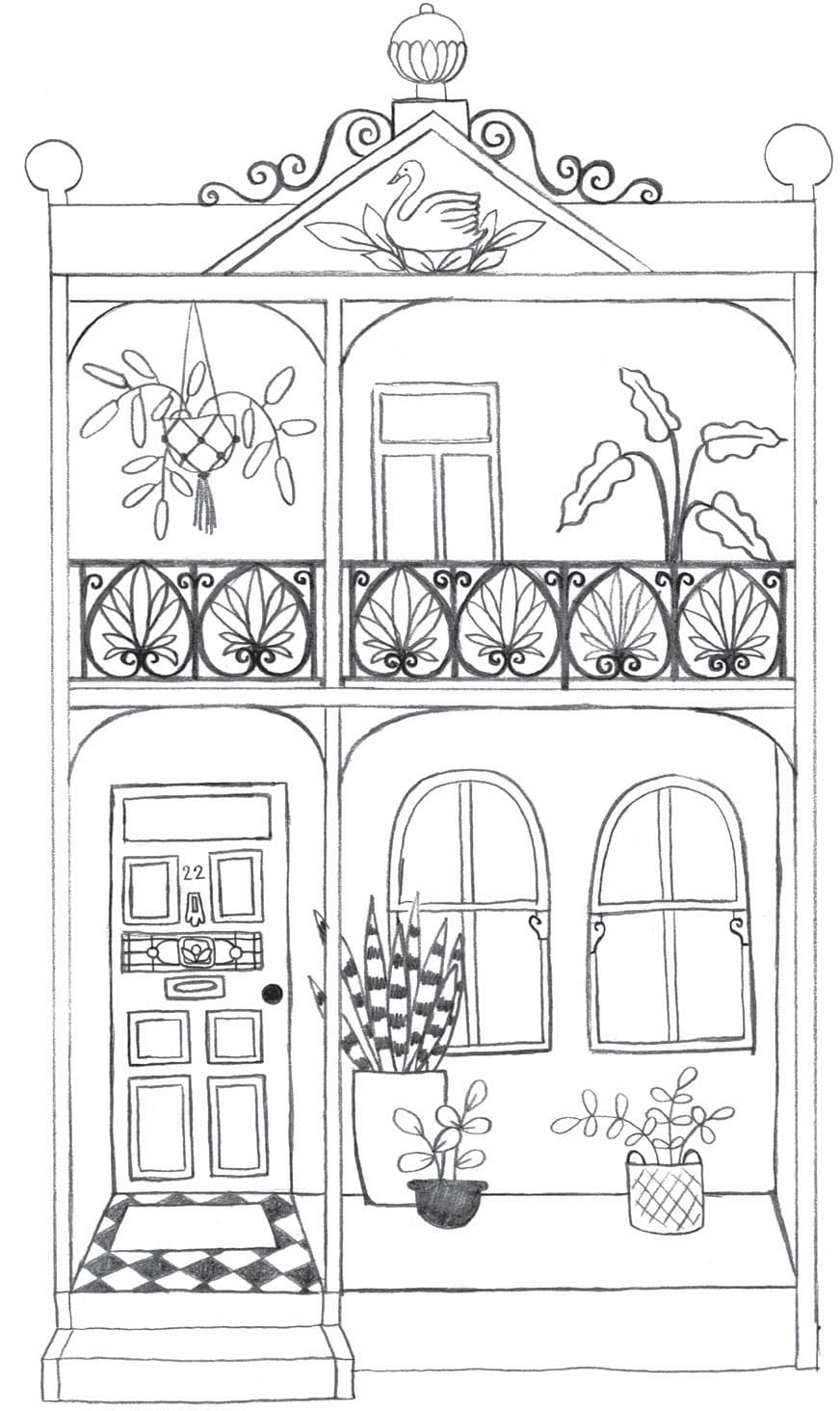
2
With the sketch showing through the light box, paint directly onto the watercolor paper using a round brush and the prepared black gouache mixture. Start with the main lines of the house. Even with a very steady hand, this technique won’t create a perfectly straight line, so you’ll end up with a beautifully organic, hand-drawn look.
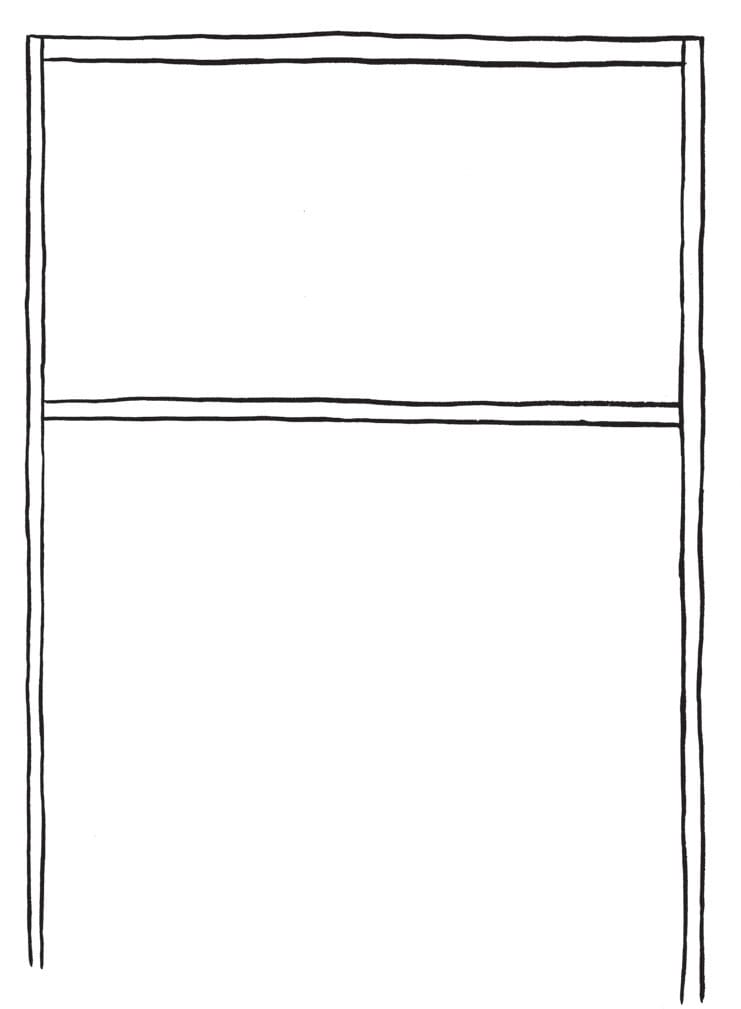
3
Paint the remaining lines of the house, including any features on the roof, steps leading up to the front door, and so on.
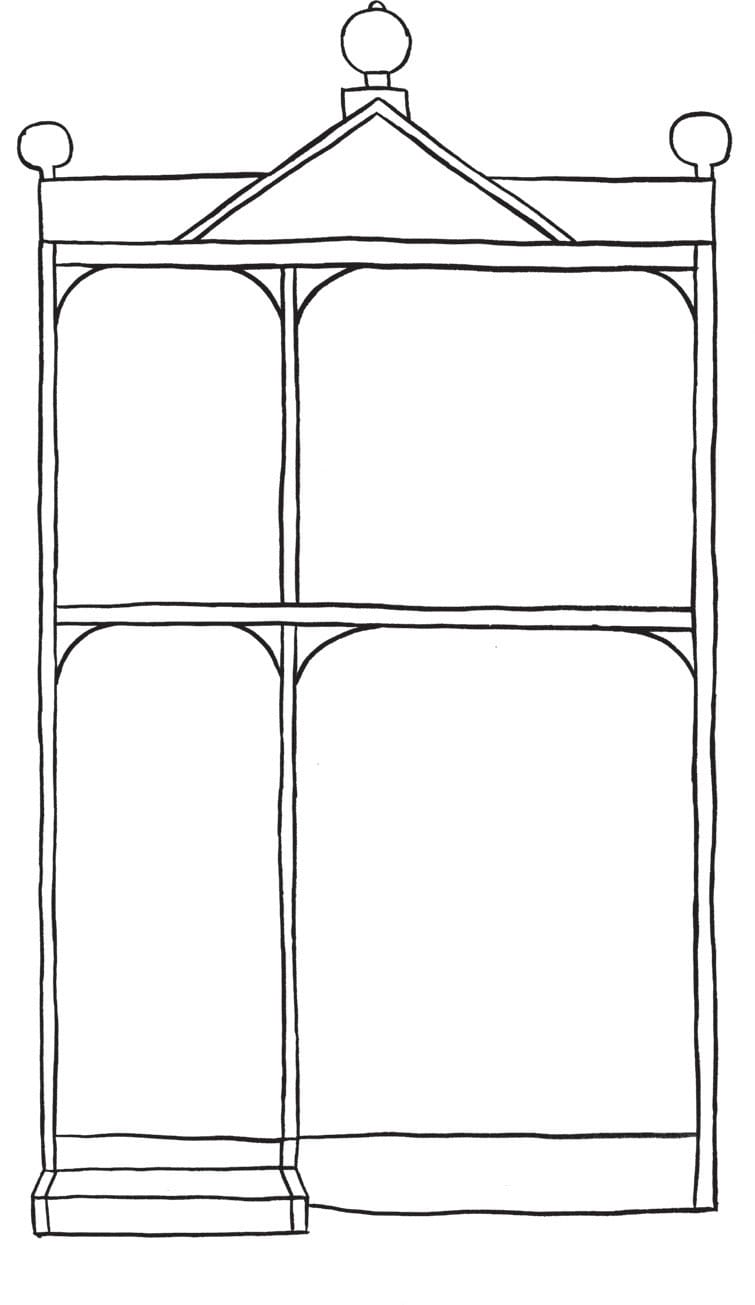
4
Draw the front door and add any decorative details to the house, such as a wrought-iron balcony and swirls on the roof.
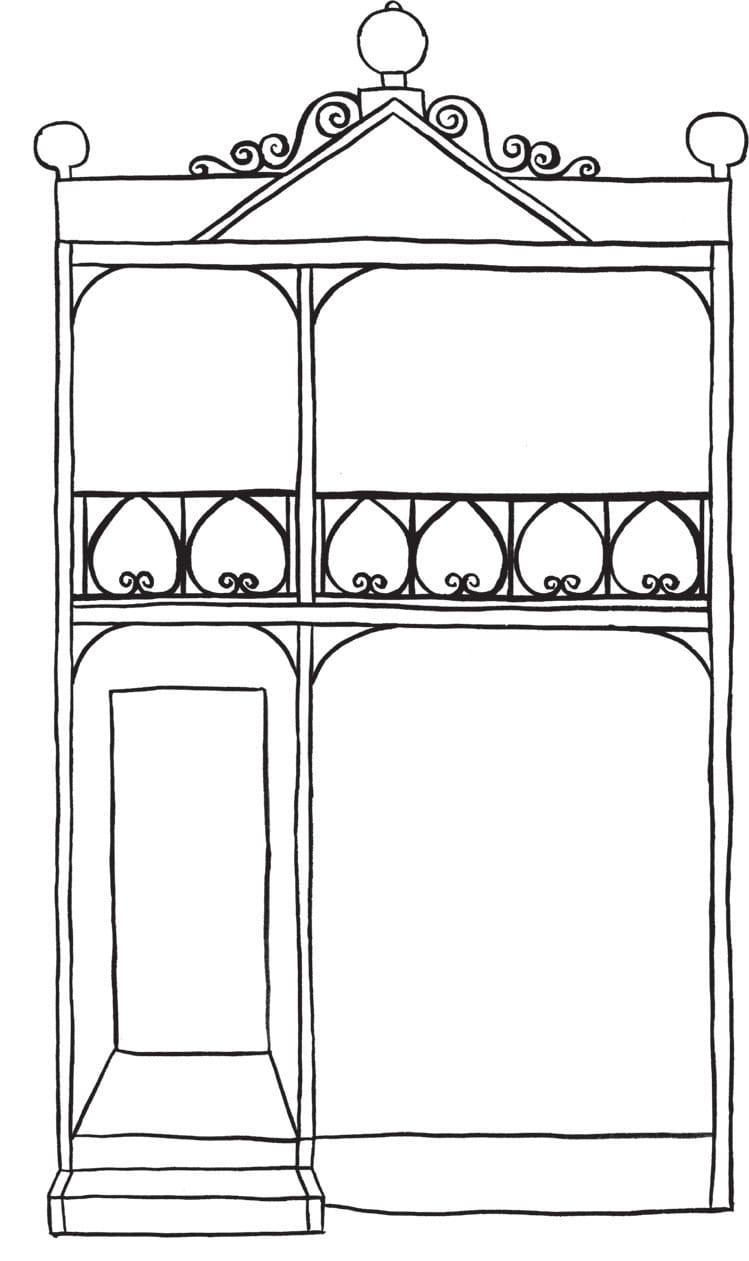
5
Add smaller details, like plants on the front porch, a doormat, decorations in the wrought-iron balcony, and an artistic motif on the roof.
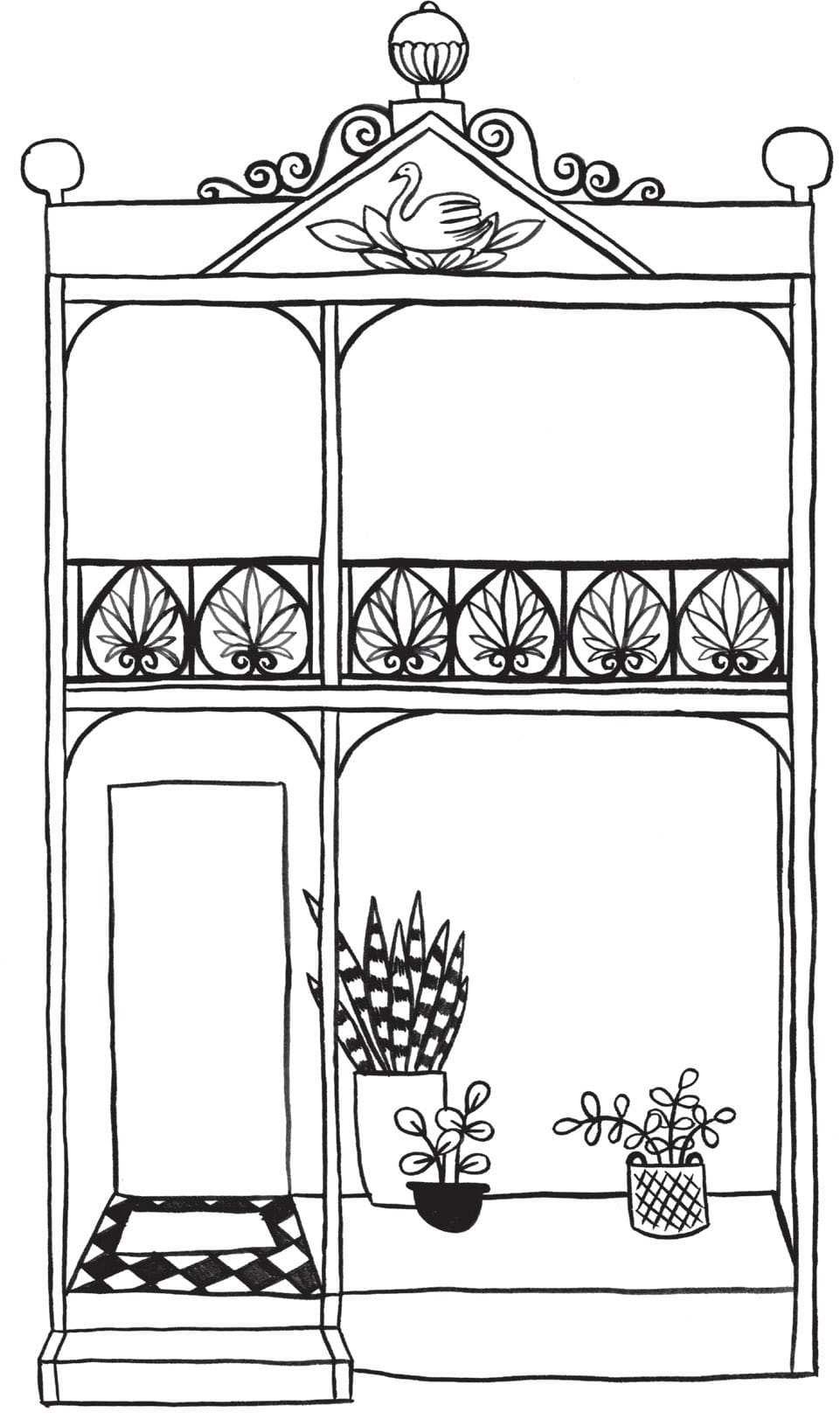
6
Fill in the windows, front door details, and plants on the balcony.
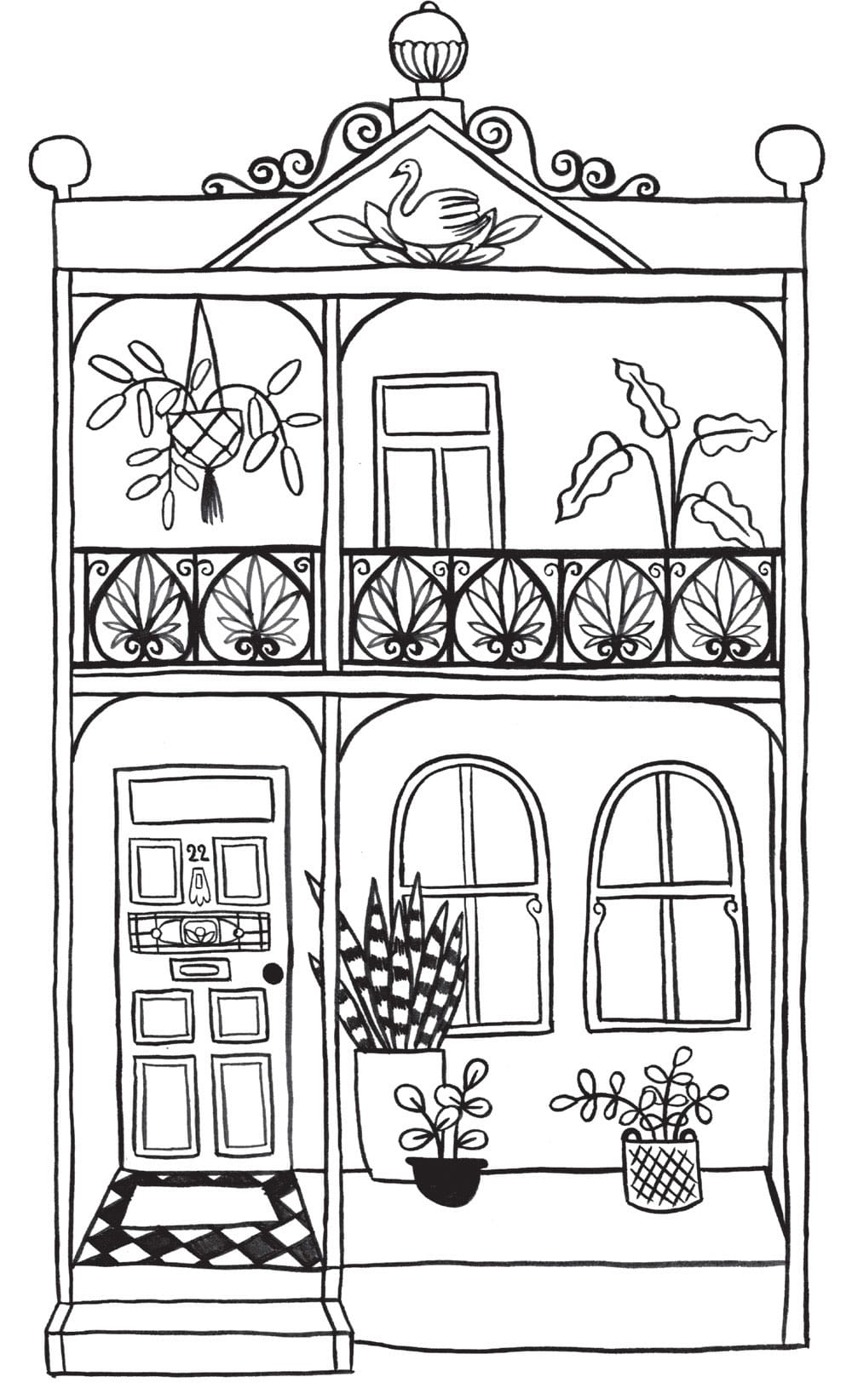
7
To break up the little details and create harmony in your final piece, fill in some solid areas in your artwork. The main horizontal and vertical lines can be filled in, as can some of the plants.

Exercise
CAFÉ
Every Monday morning, I visit my local café and spend a couple of hours planning out my week. This gets me out of my usual workspace and into a different environment where I feel stimulated and productive. Wherever you work from, this is a great habit to form; I always leave feeling organized and ready to tackle my to-do list. Cafés can also be calming places—somewhere to relax, enjoy the atmosphere, and marvel at the décor.
1
Use a colored pencil to draw an arch.
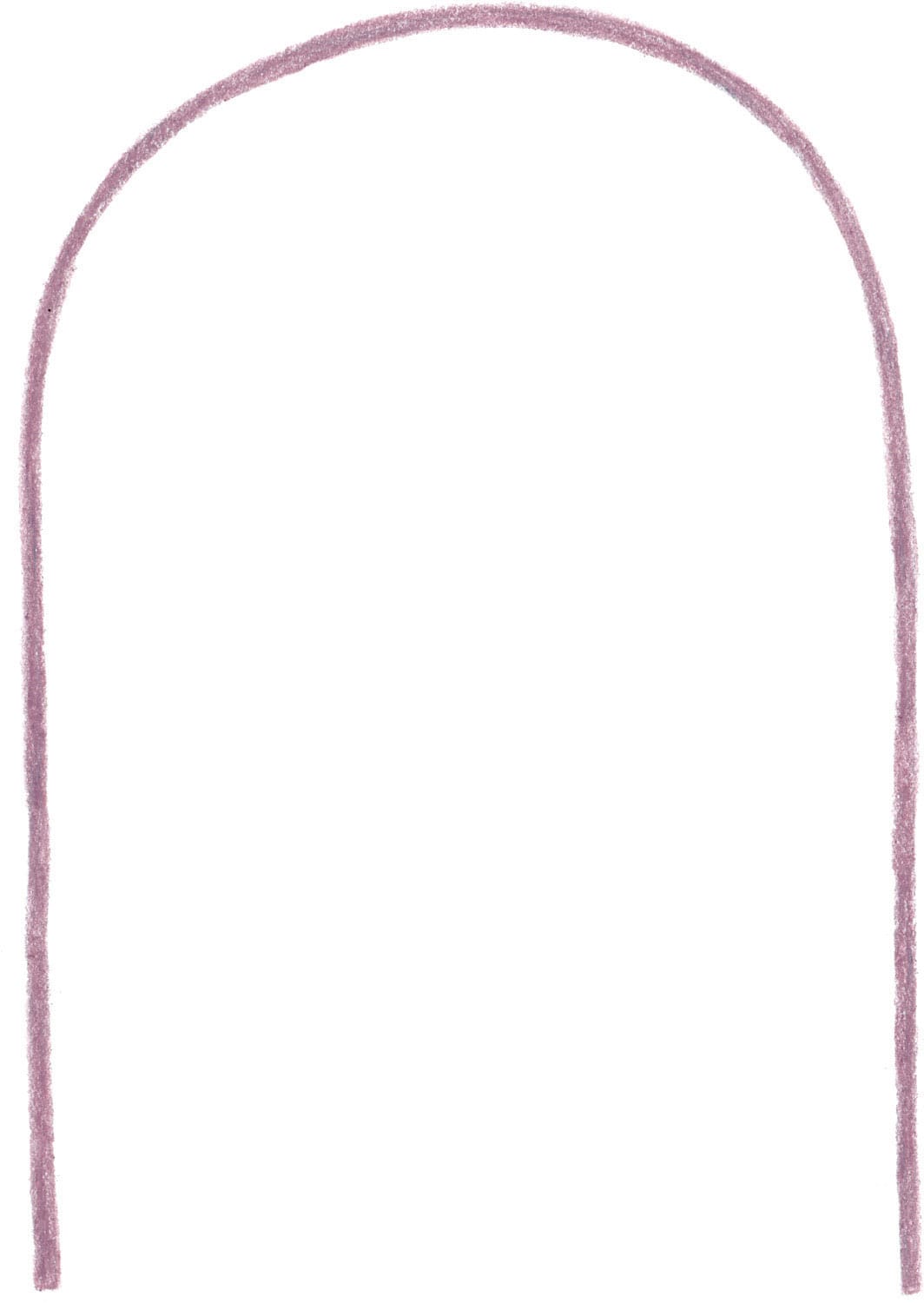
2
Inside the arch, draw a hanging lamp and stools using colored pencils. With gouache paint, add a shelf and a rectangular counter.
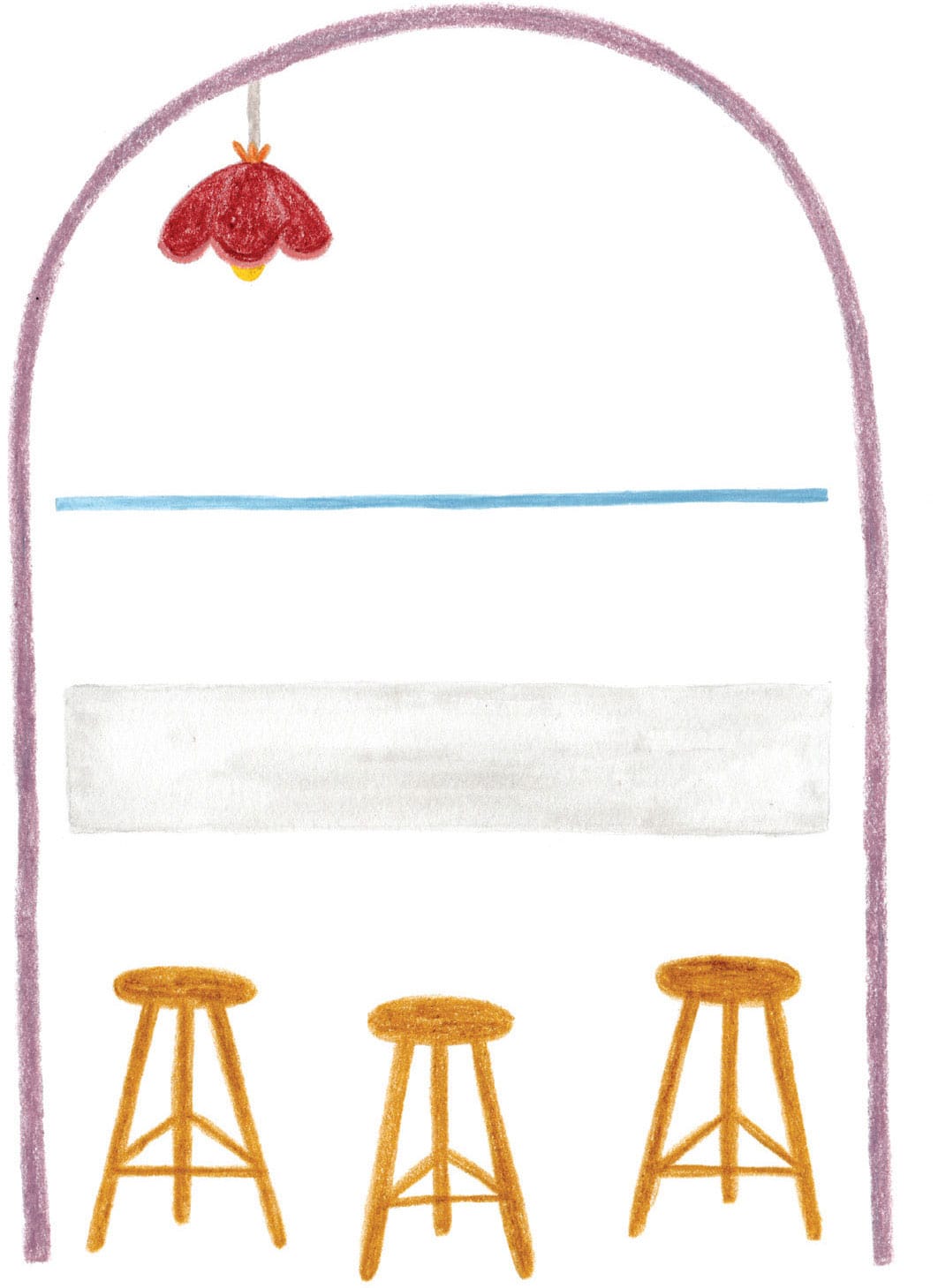
3
Add plants that will sit on the top shelf. (You’ll draw the shelf during step 4.) Fill in the tile pattern on the counter using a darker color.
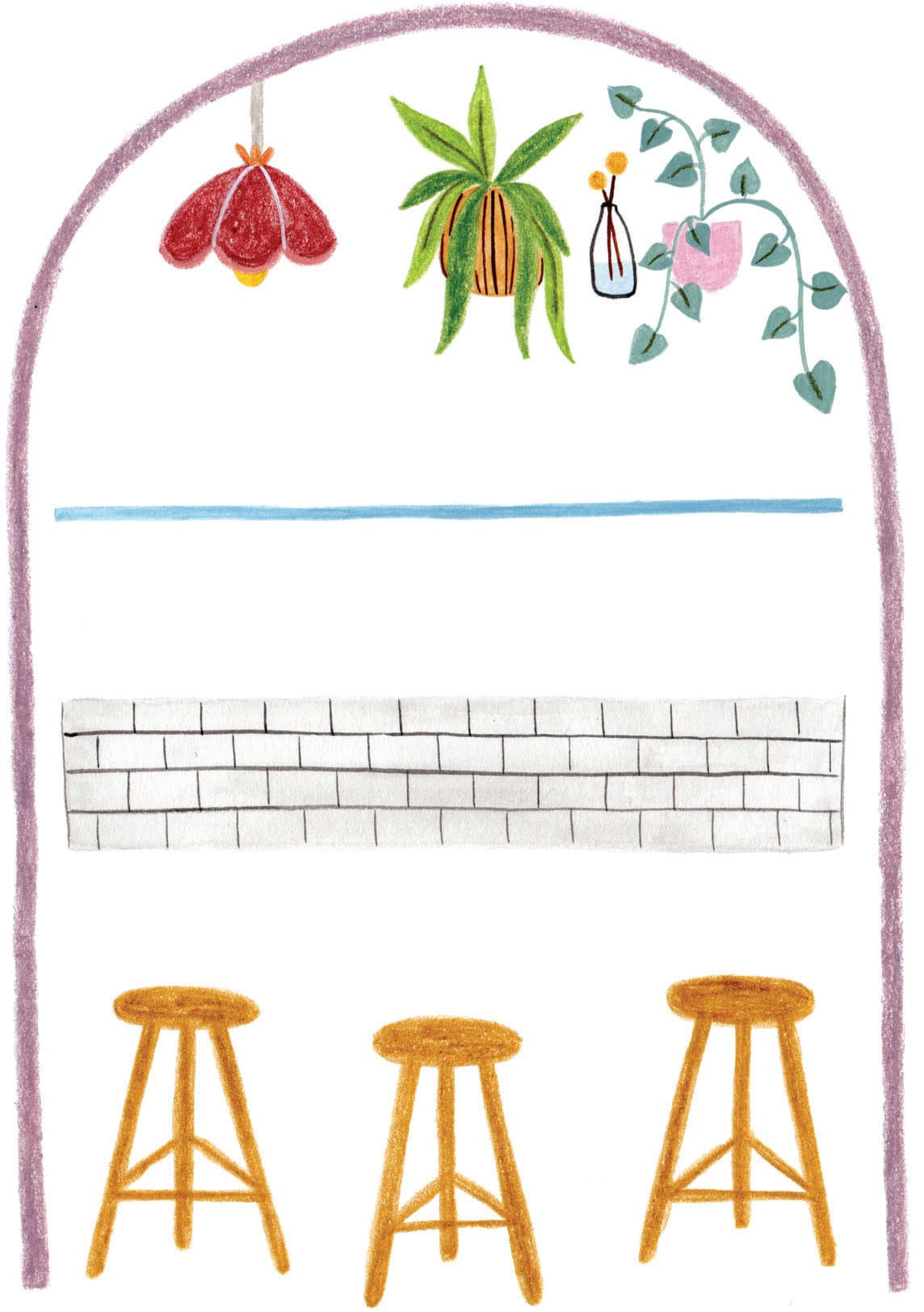
4
Draw the items on the counter, such as muffins, rolls, water, napkins, and salt and pepper shakers. Next, add your own snack, along with a cup of coffee or tea (whatever you prefer!), and fill in the rest of the counter around the art.
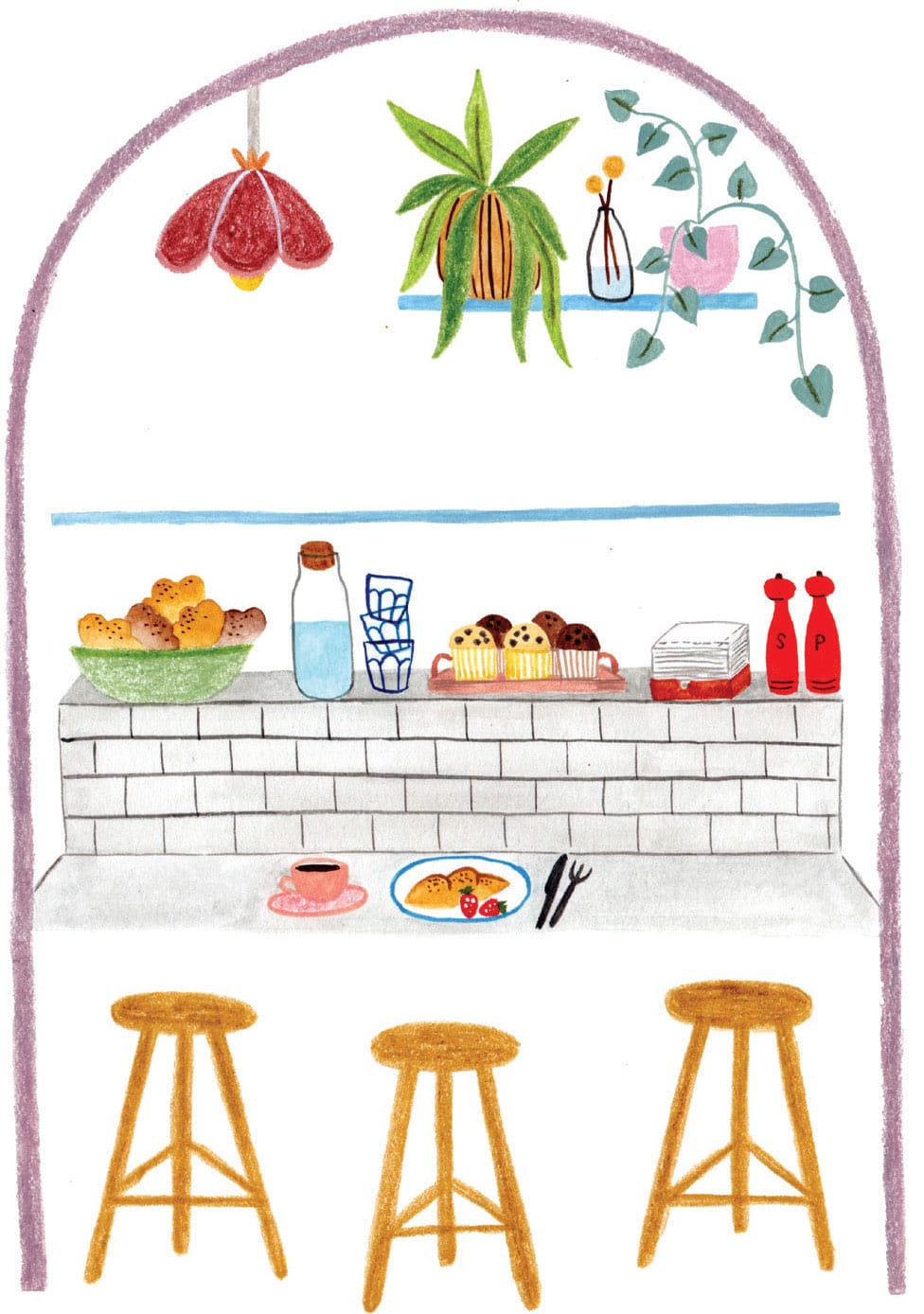
5
Fill in the items on the middle shelf using both colored pencils and gouache. Alternating media creates a lovely textural contrast!
Draw the rest of the tile pattern and wall behind the stools, and add hanging plants and a menu on the wall outside the café.

6
Using the same color as in step 1, add brick details around the arch. This frames the artwork and keeps the café scene as the main focus of the artwork. Paint the wooden floor with a warm brown color and add a sign to complete your café.

Exercise
NEIGHBORHOOD MAP
This exercise takes you through the steps of creating a map of your own neighborhood. Before you begin, take a walk around your local area and write down any special stores, cafés, and landmarks you may want to include.
Once you have a list of locations, practice creating small icons of your favorite places. A teapot and teacup can represent a café, potted plants signify a nursery, and so on. I used black gouache and a fine-tipped brush to paint the ideas below. Be as detailed as you like, or keep your icons simple and clean. Just make sure they’re recognizable!
Café
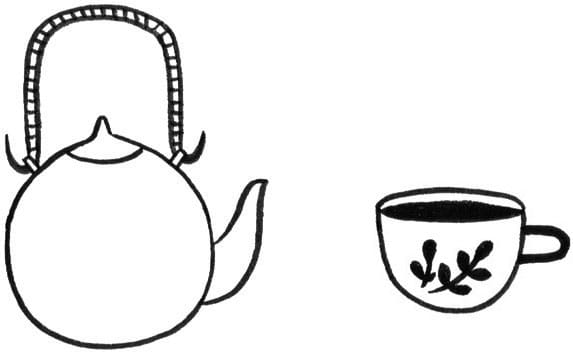
Nursery
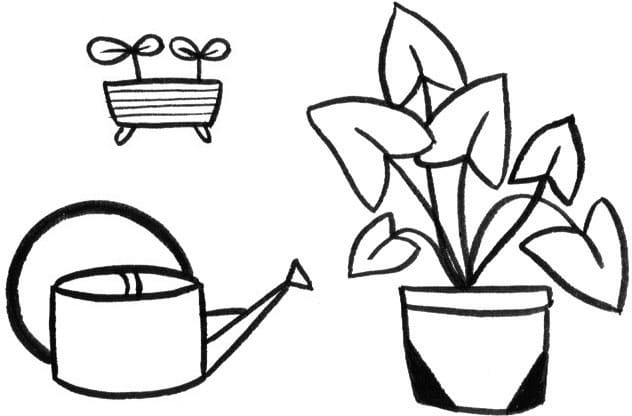
Train Station
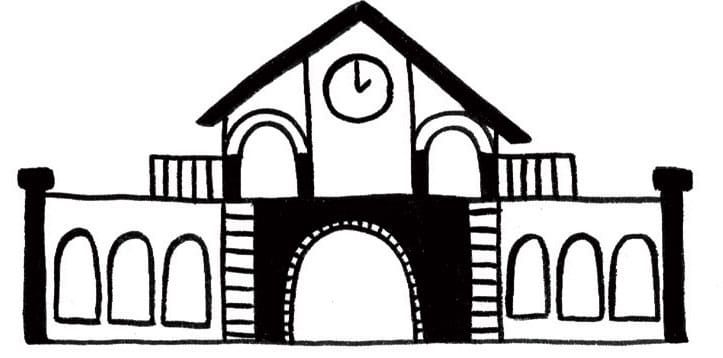
Neighborhood
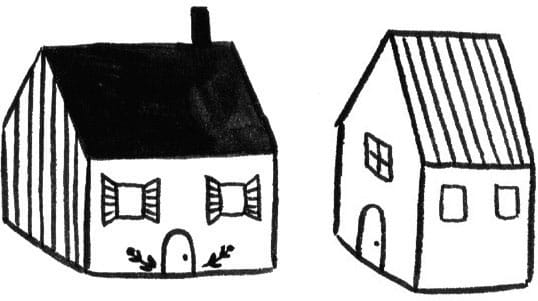
Parks & Gardens

Farmers Market
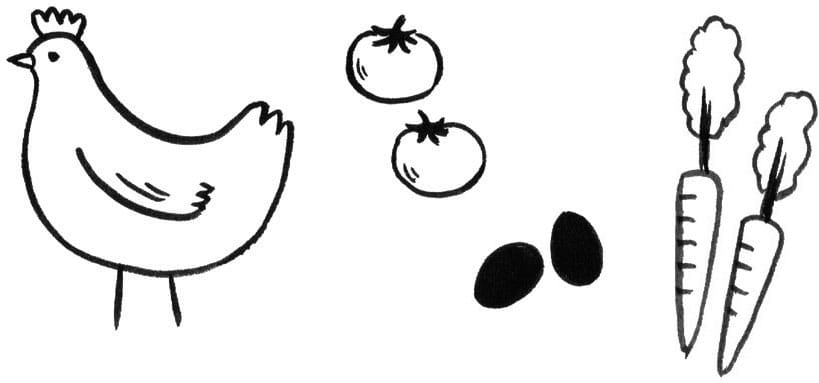
1
Use gouache to paint the streets of your neighborhood. You can refer to a map or make a sketch before adding paint if you wish. There’s no need to include every single street; keep it simple by focusing on the major roads so you have more space to illustrate your icons.
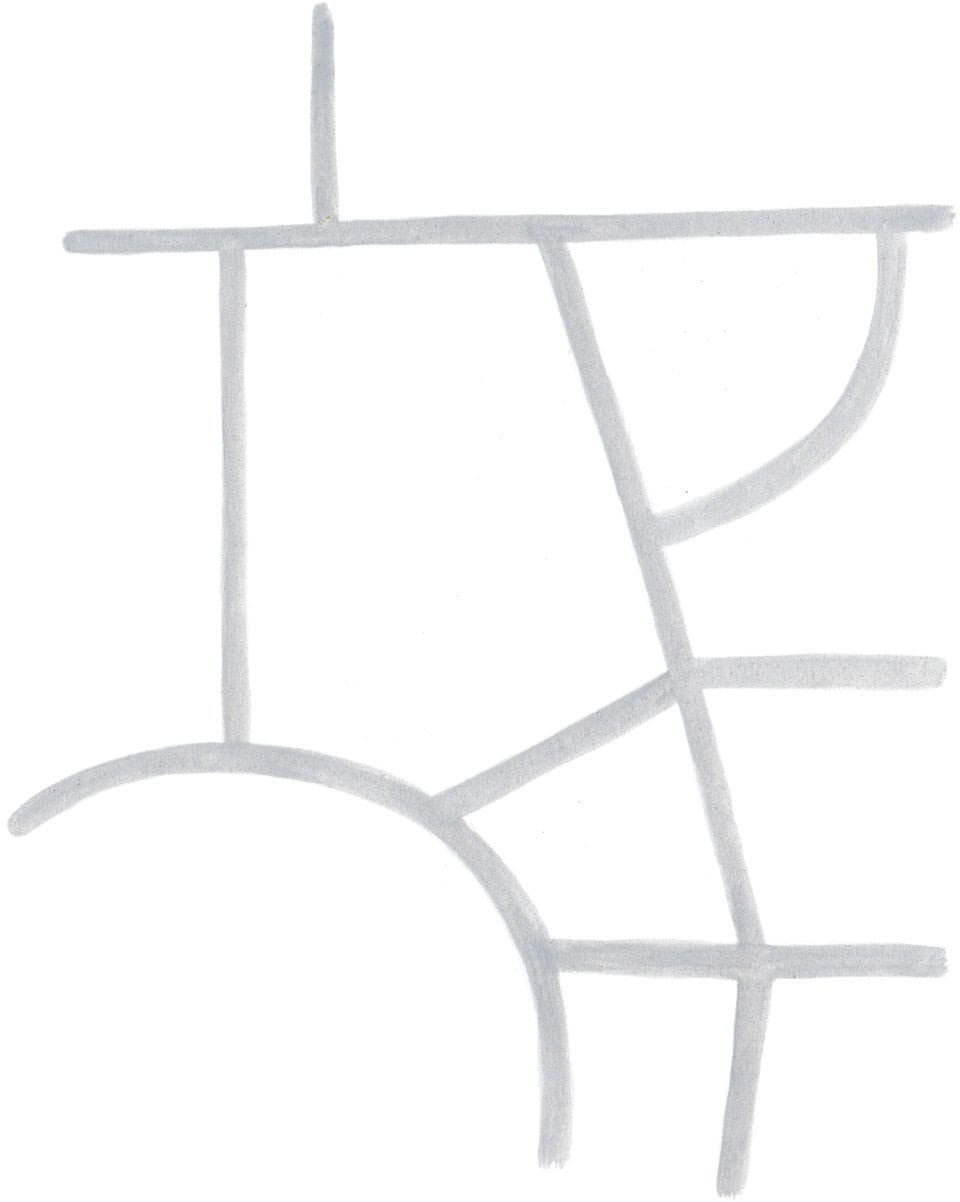
2
Add trees and parks to the map. I live near a botanical garden with a lake, which I’ve added to my map, along with a bird that I will paint during the next step.
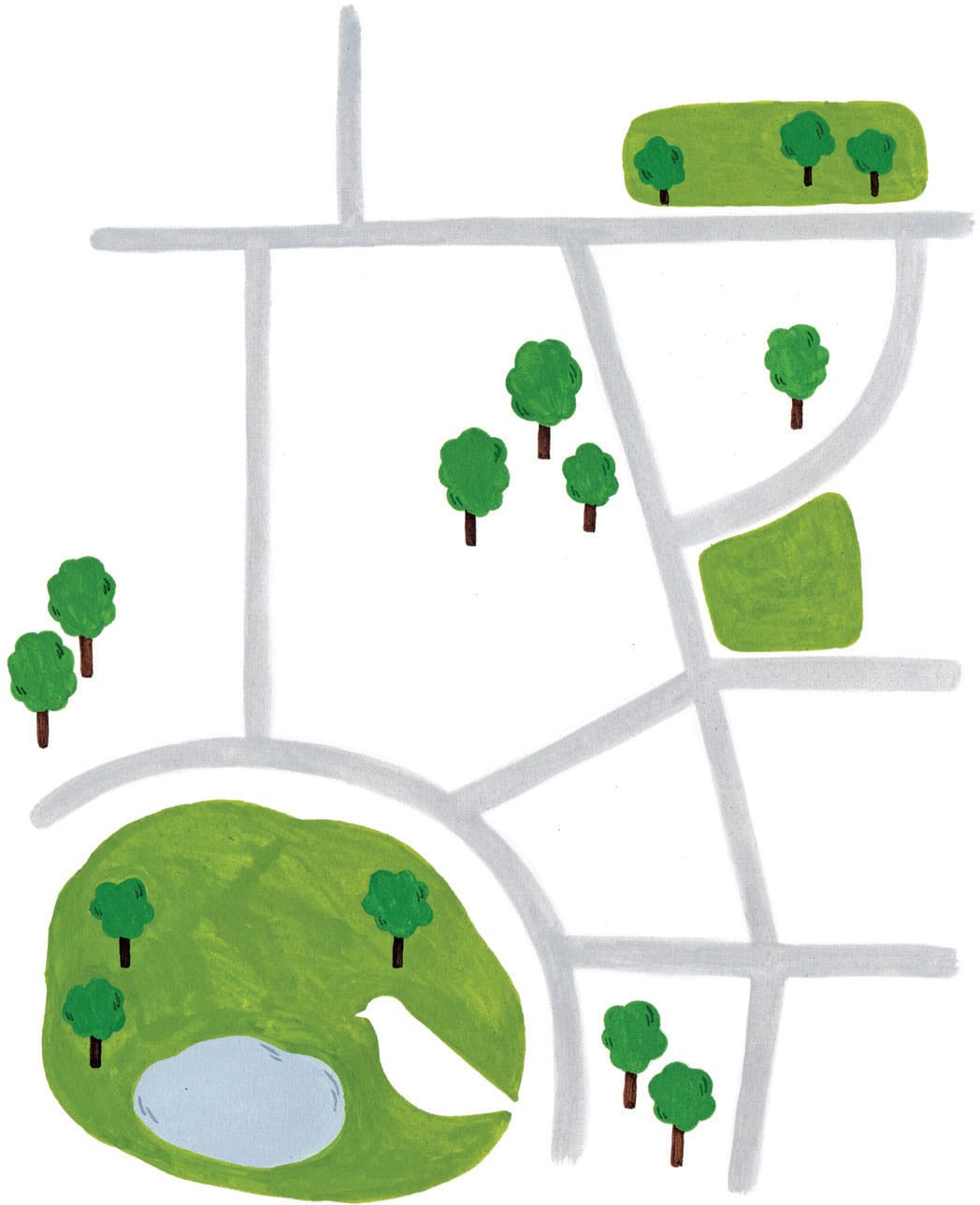
3
Fill in the buildings. I added houses, a library, and a train station with the train tracks behind it.
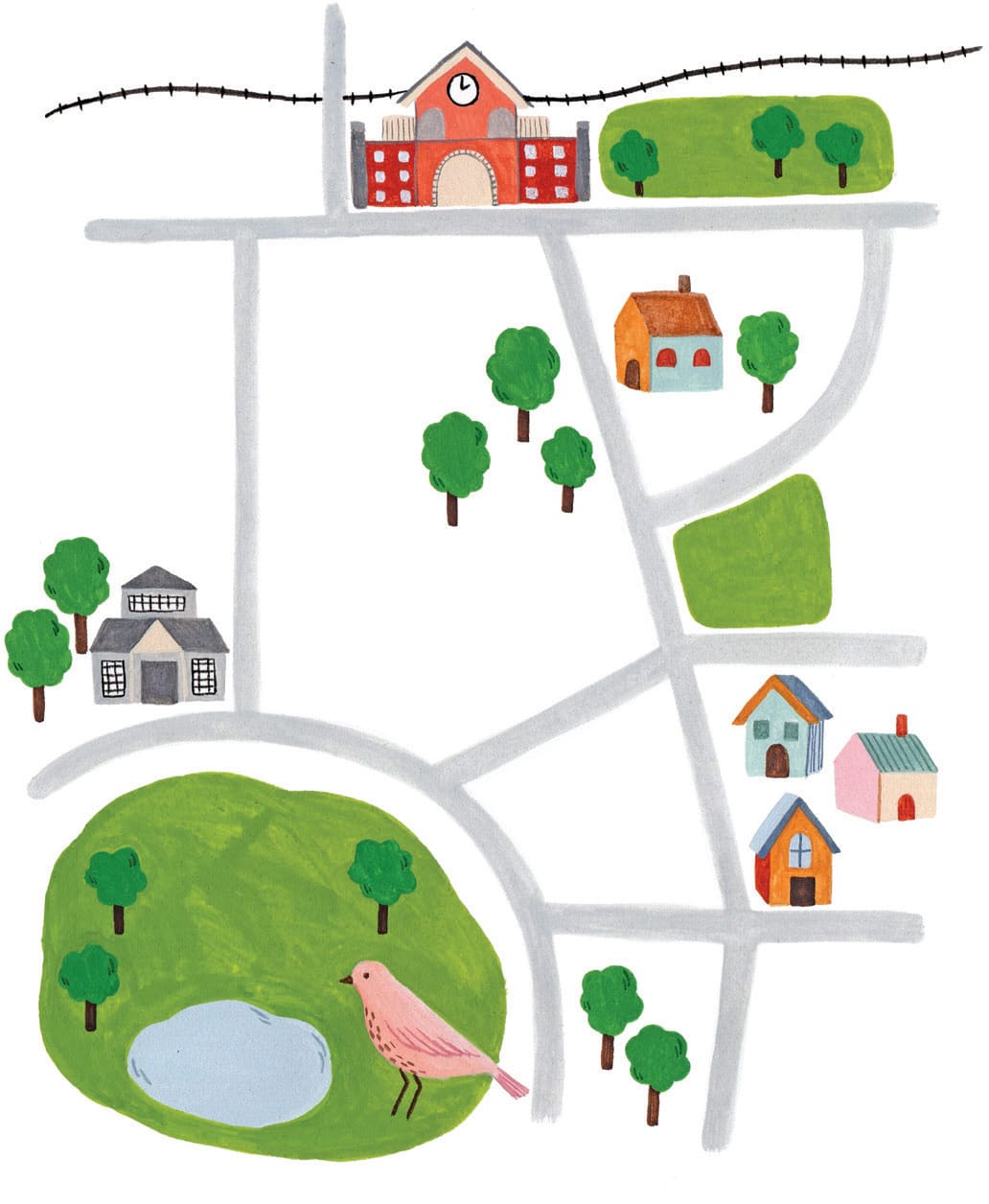
4
Add the rest of your icons throughout the map, such as a café, farmers market, and post office. Keep the spacing balanced so that there are no obvious gaps on the map.
Then add grass and flowers around the map to instantly make your neighborhood look cheerful and pretty!
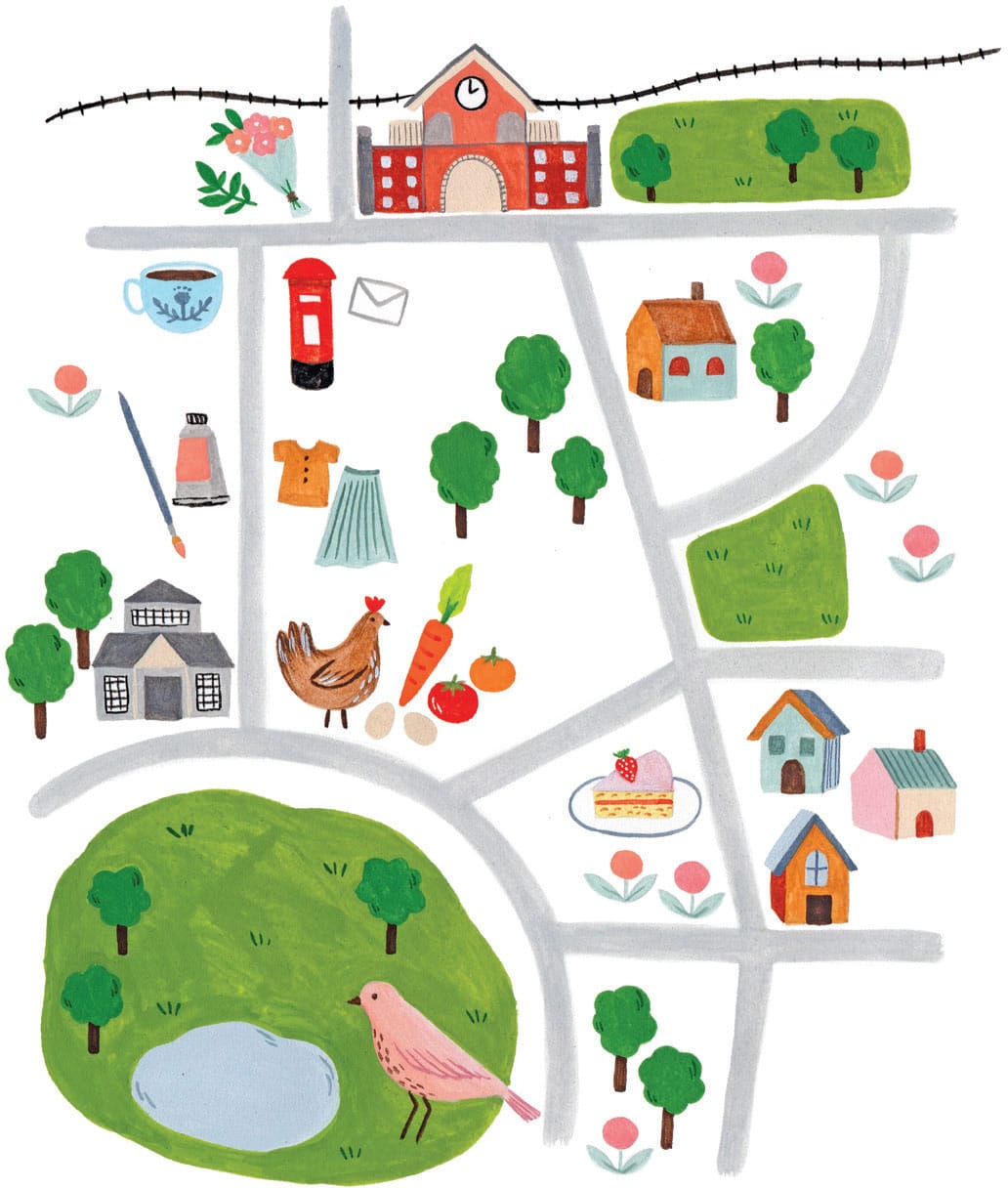
5
Fill in street and location names using a fineliner pen. Add a bicycle or your preferred mode of transportation and the map is complete!
